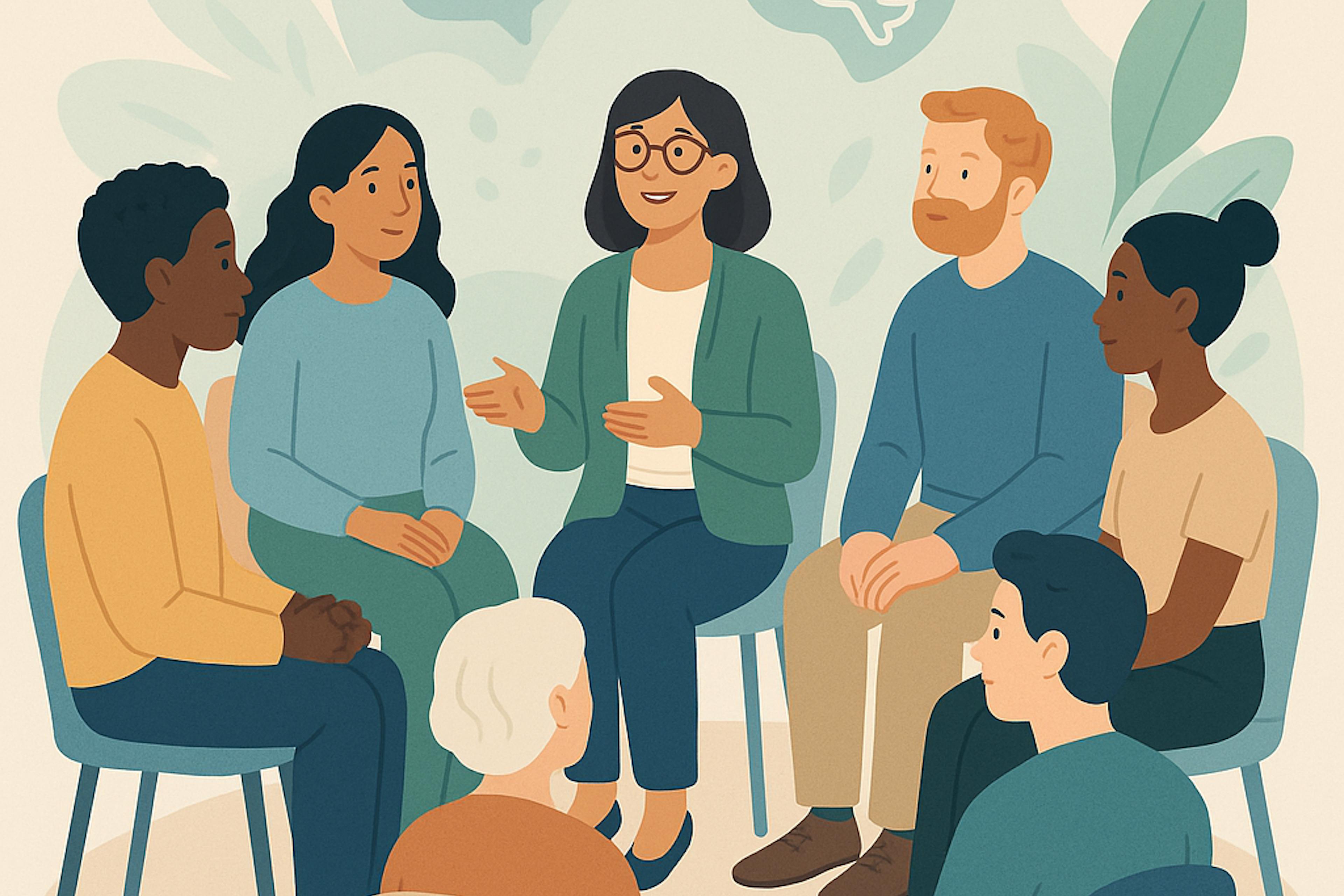Essential Guide to Group Therapy: How Therapists Lead Effective Mental Health Groups
Why Group Therapy Works: Evidence-Based Benefits for Mental Health Treatment
Group therapy has long been heralded as an efficient, evidence-based way to widen access to mental-health care—often matching individual therapy for outcomes while fostering peer support and social learning. Yet the effectiveness of any group hinges on the clinician who designs, safeguards, and guides it. Far more than a discussion moderator, the group therapist is architect, facilitator, guardian, and catalyst rolled into one.(pmc.ncbi.nlm.nih.gov)
How to Design and Structure Successful Therapy Groups
Screening & composition. Before the first session, the therapist selects members whose goals, functioning levels, and interpersonal styles can coexist productively. Careful screening reduces drop-outs and safety incidents while enhancing therapeutic factors such as cohesion and universality.(ncbi.nlm.nih.gov)
Contracting the container. The therapist establishes purpose, frequency, confidentiality expectations, and ground rules (e.g., respect, punctuality). Clear "container-setting" aligns member expectations and provides a secure base for emotional risk-taking.(apa.org)
Group Facilitation Techniques: Balancing Process and Content in Therapy Sessions
During sessions, the therapist constantly toggles between:
Process work – illuminating here-and-now dynamics, "linking" members to each other, encouraging feedback loops, and addressing conflict constructively.
Content work – bringing psychoeducation, skills practice, or thematic focus (e.g., CBT for anxiety).
The art is knowing when to lean back to let members interact and when to lean in with timely interventions such as summarizing, blocking harmful behavior, or challenging avoidance.(ncbi.nlm.nih.gov)
Legal and Ethical Requirements for Group Therapy Practice
Confidentiality & informed consent. Therapists reiterate limits of privacy (especially if the group meets online) and obtain individual consents that satisfy HIPAA and state regulations.(dhcs.ca.gov)
Risk management. They monitor for suicidality, interpersonal aggression, or triggering disclosures, having protocols for crisis escalation.
Digital safeguards. In tele-groups, additional steps—waiting-room controls, headset policies, backup phone numbers—are essential to protect privacy and handle tech failures.(telehealth.hhs.gov)
Creating Inclusive and Culturally Responsive Group Therapy Environments
Therapists model cultural humility, address micro-aggressions, and invite all voices—from the extroverted to the reticent—to ensure psychological safety. Attention to intersectionality (race, gender, disability, sexual orientation) enriches discussion and counters isolation.
Understanding Group Development Stages: From Formation to Termination
Stage 1: Forming/Orientation Members engage in testing behaviors and show dependency on the therapist. During this initial phase, therapists should provide clear structure, invite member introductions, and establish group norms to create a foundation for trust.
Stage 2: Storming/Conflict Power struggles emerge as members test boundaries and form subgroups. Therapists must normalize conflict as a healthy part of group development, keep dialogue open between members, and maintain safety while allowing productive tension.
Stage 3: Norming/Cohesion Trust builds as members begin meaningful disclosure and develop group identity. Therapists can shift toward facilitation rather than direction, highlighting shared goals and encouraging members to support one another.
Stage 4: Performing/Working Deep therapeutic exploration occurs with members providing mutual help and feedback. Therapists use advanced interventions, encourage member leadership, and step back to allow the group's natural healing processes to flourish.
Stage 5: Termination Members review their gains while processing feelings about group ending. Therapists summarize individual and collective progress, help members plan for ongoing support, and facilitate closure rituals that honor the group experience.(ncbi.nlm.nih.gov)
Group Therapy Effectiveness: Research and Outcome Measurement
Modern studies show group therapy equals individual work for many presentations, from depression to trauma-related disorders, while offering cost savings and peer normalization. Therapists who administer brief outcome measures (e.g., PHQ-9, GAD-7) at intervals can track effectiveness and fine-tune interventions.(pmc.ncbi.nlm.nih.gov)
Therapist Self-Care and Professional Development in Group Work
Group facilitation is emotionally demanding—therapists absorb multiple transferences simultaneously. Regular supervision, peer consultation, and reflective practice help clinicians process counter-transference and prevent burnout.
Step-by-Step Guide: Starting Your First Therapy Group
- Start small: 5-7 members lets you hone your process skills before expanding.
- Use a co-facilitator: Especially for trauma or DBT skills groups, two sets of eyes enhance safety and modeling.
- Draft a written group agreement: Share it at intake and revisit it after session 1.
- Over-communicate logistics: Send calendar invites, remind members of tech checks, and clarify make-up/late policies.
- Collect feedback early: Anonymous check-ins after session 2 help catch mis-alignments before they snowball.
Ready to launch your group? If you're looking to advertise or list a group to attract the right members, ZestLife can help you reach potential participants in your area who are seeking the specific type of support you offer.
Conclusion: Maximizing Impact Through Expert Group Therapy Facilitation
Whether in a hospital day program or a virtual support circle, the therapist's role in group work is multidimensional: curating the membership, crafting the container, orchestrating the process, and safeguarding ethical practice. When executed with intention and evidence-based skill, effective group facilitation amplifies each participant's growth while multiplying a clinician's impact. If you're ready to launch or refine a therapy group, explore ZestLife's tools for seamless onboarding, scheduling, and payments—so you can focus on what you do best: facilitating transformative group experiences.
References
- StatPearls. "Group Therapy." National Center for Biotechnology Information, updated 2024.(ncbi.nlm.nih.gov)
- American Psychological Association. "Practice Guidelines & Related Materials." 2023.(apa.org)
- Telehealth.HHS.gov. "Group Teletherapy Best Practices." 2024.(telehealth.hhs.gov)
- APA Monitor. "Effective Group Therapy." 2023.(apa.org)
- Burlingame, G.M., & Strauss, B. "New Horizons in Group Psychotherapy Research." 2023.(pmc.ncbi.nlm.nih.gov)
